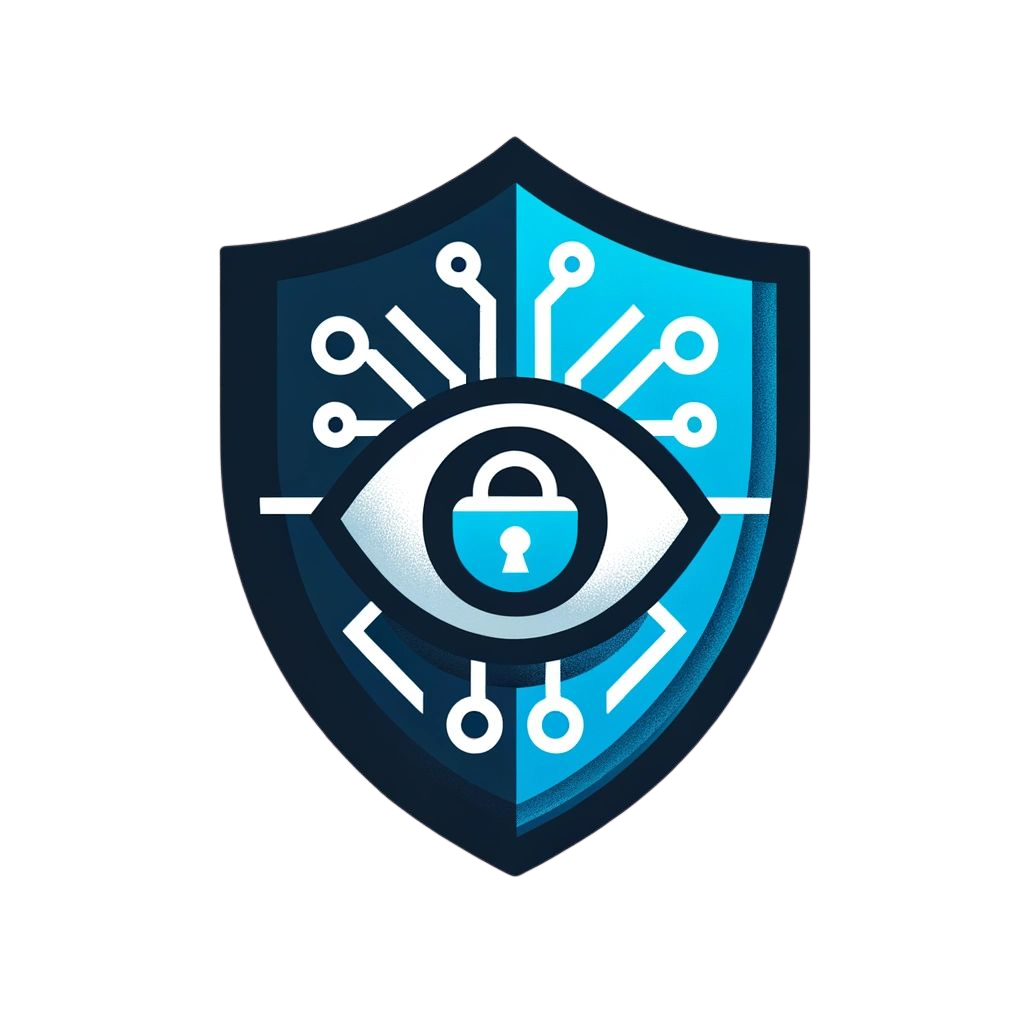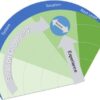The vulnerability management market is projected to reach US$24.08 billion by 2030, with numerous vendors offering seemingly different solutions to the same problem. How does an organization choose the right vulnerability management tool for its needs?
Today, we compare three tools that offer overlapping (but different) vulnerability management capabilities—Intruder, Acunetix, and Attaxion. We’ll start with a brief overview of each tool and then cover their pricing plans, asset discovery capabilities, vulnerability scanning techniques, vulnerability prioritization and remediation, and continuous monitoring in more detail.
Intruder vs. Acunetix vs. Attaxion: Defining Their Core Functionality
While Intruder, Acunetix, and Attaxion all contribute to an organization’s vulnerability management efforts, they operate with different core functionalities.
Intruder.io is a cloud-based vulnerability management and attack surface management (ASM) platform that aims to help organizations reduce their threat exposure by scanning for internal and external (including cloud, API, and web application) vulnerabilities.
Acunetix by Invicti defines itself as a Dynamic Application Security Testing (DAST) tool, focusing primarily on the attack surfaces of web applications. However, it has some asset discovery capabilities, making it suitable for vulnerability or external attack surface management (EASM).
Attaxion is an EASM platform focused on attack surface discovery, which entails automatically discovering external assets and scanning them for vulnerabilities. It is an alternative to Intruder.io and Acunetix, although Attaxion has a broader scope than the latter since it covers all external-facing systems.
| Intruder vs. Acunetix vs. Attaxion Core Functionality | |||
|---|---|---|---|
| Intruder.io | Acunetix | Attaxion | |
| Type of tool | Vulnerability management and ASM platform | DAST with asset discovery capability | EASM platform |
| Core functionality | Vulnerability scanning | Vulnerability scanning | Attack surface discovery |
| Coverage | Internal systems, cloud, web applications, and APIs | Web applications and APIs | All external-facing systems, including web applications, cloud, and APIs |
Pricing Plans
When it comes to free trials, Attaxion is the most generous—it has a 30-day trial period that includes all features, without requiring a credit card. Meanwhile, Intruder.io offers a 14-day trial of its Cloud tier, which doesn’t include features like new service scans and subdomain discovery. Acunetix doesn’t have a publicly available free trial, but offers so-called “Proof of Concept” licenses which allow organizations to test the platform in their actual environments before they purchase.
All three platforms employ a tiered pricing model, but with varying criteria. Here’s a table that quickly differentiates Intruder vs. Acunetix vs. Attaxion pricing.
| Intruder vs. Acunetix vs. Attaxion: Pricing | |||
|---|---|---|---|
| Intruder | Acunetix | Attaxion | |
| Starting Price | $153 per month (for Cloud plan) | $7,000 per year | $129 per month |
| Pricing Model | Tiered by feature scope and asset count | Tiered by feature scope and target count | Tiered by asset count |
| Free Trial Available | Yes | No | Yes |
| Key Pricing Factor | Features | Organization size | Number of assets scanned |
- Intruder.io: Intruder has four pricing tiers, namely Essential, Cloud, Pro, and Enterprise, with Essential being the cheapest at $99 per month, although this is limited to one scheduled scan, does not cover cloud environments, internal systems, and performs network scans only once per month. The next tier, Cloud, is more suitable for vulnerability management for external assets, and the price starts at $153 per month.
- Acunetix: This platform has three pricing tiers—Essentials, Professional, and Ultimate. While the exact prices are not disclosed on the website, we know that their price depends on the number of targets or websites. Their Amazon Marketplace listing shows that 12 months of Acunetix Online Premium with five targets costs $7,000.00—from there, the price goes up.
- Attaxion: With Attaxion, you gain access to all features across their four pricing tiers—Starter, Plus, Business, and Enterprise—which differ primarily in the asset count. The Starter plan starts at $129 per month and scans up to 40 assets. As asset count grows, Attaxion provides progressively higher-capacity plans with transparent pricing, as shown on their pricing page.
Vulnerability Management Capabilities
At this point, we compare Intruder.io, Acunetix, and Attaxion based on four essential vulnerability management capabilities—asset discovery, vulnerability scanning, vulnerability prioritization and remediation, and continuous monitoring. Here’s a TL;DR version of the comparison:
| Intruder vs. Acunetix vs. Attaxion Vulnerability Management Capabilities | |||
|---|---|---|---|
| Intruder | Acunetix | Attaxion | |
| Asset discovery | Primarily relies on manual addition of targets, with cloud connector integrations for AWS, GCP, Cloudflare, and AzureNo subdomain enumeration on lower tiers | Focuses on web applications residing on selected domains and subdomainsRequires initial targets No native support for IP ranges or cloud instances as root assets | Comprehensive discovery of external assets, including domains, subdomains, IPs, ports, SSL certificates, and exposed emails Can discover associated domains Provides dependency and discovery graphs |
| Vulnerability scanning | Offers different scanners based on the plan (OpenVAS, Nuclei, Tenable Nessus, OWASP ZAP) Supports scheduled and on-demand scansEmerging threat scans | Employs active, proof-based proprietary DAST scanner with high accuracy and low false positivesOffers scheduled scans | Primarily relies on OWASP ZAPFocuses on the entire external attack surfacePerforms technology fingerprintingNo scheduling option (it runs continuously) |
| Vulnerability Prioritization and Remediation | Prioritizes using CVSS, EPSS, and CISA KEV data.Provides remediation suggestions and integrates with various ticketing systems | Uses Predictive Risk Scoring (AI) and CVSS scores for prioritization.Offers detailed remediation guidance, and pinpoints code linesIntegrates with project management and bug tracking tools | Prioritizes based on CVSS severity, CISA KEV data, and EPSS scoresCreates support tickets with remediation suggestions and integrates with Jira |
| Continuous Monitoring Features | Automatically discovers new services and initiates scans (Enterprise only)Provides emerging threat scans (Cloud, Pro, and Enterprise)Customizable notifications via email and Slack | Automatic discovery of web-facing assetsScheduled recurring scansNotifications via email and SMS and integrates with Slack. | Near real-time scanning for new assets and vulnerabilitiesAlerts via email and SlackSecurity event logging |
Asset Discovery Capabilities
Intruder.io
Intruder only offers automated cyber reconnaissance for broader asset discovery on the Enterprise plan. On cheaper plans, Intruder’s asset discovery capabilities are primarily driven by its integrations with cloud platforms—outside these integrations, the platform’s ability to automatically uncover an organization’s wider attack surface is limited.
Intruder integrates with cloud platforms like AWS, GCP, Cloudflare, and Azure to automatically detect related domains, subdomains, untracked APIs, and other assets.
Acunetix
Acunetix focuses its asset discovery efforts primarily on web-facing assets associated with an organization’s websites or fully qualified domain names (FQDNs). The tool automatically crawls specified web URLs to identify potential web application components that require scanning.
Source: https://www.acunetix.com/support/docs/introduction/
Since it is primarily a DAST tool, Acunetix’s focus is to identify and scan web applications and their components, and may not be able to include broader asset types like IP ranges and cloud instances.
Attaxion
As an EASM platform, Attaxion is designed to discover all kinds of an organization’s external assets, providing a real-time inventory that encompasses not only web applications but also a wide array of other Internet-facing assets, their connections, and underlying technologies.
Attaxion employs various cyber reconnaissance techniques to uncover associated subdomains, IP addresses, open ports, SSL certificates, and even exposed email addresses. For each asset, it creates discovery and dependency graphs, showing how the asset was discovered and which other assets depend on it.
Vulnerability Scanning Techniques
Intruder.io
Intruder offers a range of vulnerability scanning techniques for external, internal, cloud, web applications, and APIs, including:
- Vulnerability assessment scans.
- Network scans.
- Emerging threat scans.
- Remediation scans.
- Cloud security scans.
- New service scans.
The specific scanning engines used by Intruder vary depending on the chosen pricing plan. For example, its lowest tier (Essential) only performs monthly network scans and vulnerability scans using OpenVAS.
The more advanced scanning techniques are only available in Cloud, Pro, and Enterprise, with internal scanning accessible to Pro and Enterprise users, and new service scans — only to Enterprise.
Acunetix
Acunetix has the ability to detect over 7,000 types of vulnerabilities, including common web application flaws like those listed in the OWASP Top 10, as well as cross-site scripting (XSS) and out-of-band vulnerabilities.
The platform employs a proof-based scanning technology that automatically verifies detected vulnerabilities with a claimed accuracy of 99.98%, as this active scanning approach involves the use of payloads to attempt to exploit potential vulnerabilities. While the technique significantly reduces false positives, it is quite intrusive and can slow down the scanned application.
Attaxion
Attaxion takes a different approach to vulnerability scanning as it prioritizes continuous and non-intrusive monitoring of the entire external attack surface. The platform combines various tools, with OWASP ZAP being the primary scanning engine it uses for web applications. Its vulnerability database is kept updated with information from MITRE’s CVE and CWE lists.
Attaxion performs continuous scanning in near real-time, constantly checking assets for new vulnerabilities and performing technology fingerprinting to identify potentially vulnerable technologies associated with each asset. This continuous approach provides timely detection of new vulnerabilities.
Vulnerability Prioritization and Remediation
Intruder.io
Intruder.io provides a broad vulnerability prioritization context by incorporating information beyond standard CVSS scores. It combines data from CISA’s Known Exploited Vulnerabilities (KEV) list and exploitation predictions driven by machine learning (EPSS scores) to help users focus on the issues that are most likely to be exploited in the wild.
The platform’s dashboard offers a comprehensive view of identified issues, including descriptions, affected assets, the time since discovery, remediation suggestions, and related CVEs.
Users can also mark issues with different statuses, such as accepted risks, false positives, or mitigated.
To support the remediation process, Intruder offers integrations with a variety of ticketing software, including Jira, GitHub, GitLab, Azure DevOps, and ServiceNow. It also provides remediation dashboards that track team performance metrics, such as the average time to fix issues, helping organizations monitor and improve their remediation efforts.
Acunetix
Acunetix takes a different approach to vulnerability prioritization. Instead of providing additional context for vulnerabilities, its Predictive Risk Scoring utilizes artificial intelligence to analyze over 220 data points, enabling smart prioritization of assets even before a scan begins. This allows security teams to focus their initial efforts on the applications and APIs that pose the highest potential risk.
Once vulnerabilities are identified, Acunetix assists in remediation by pinpointing the exact lines of code that require fixing and providing detailed remediation guidance to developers. It also provides vulnerability ratings and proof of exploit information to further aid developers in understanding the severity and impact of the identified issues.
Acunetix integrates with a wide range of project management and bug tracking tools, such as Jira, Redmine, and ServiceNow, allowing users to export vulnerability information as bug reports, facilitating efficient tracking and management of the remediation workflow.
Attaxion
Like Acunetix and Intruder.io, Attaxion utilizes severity levels and CVSS scores as the main criteria for prioritization and offers filtering options to manage the findings. Like Intruder, Attaxion also takes into account data from the CISA KEV catalog and provides an EPSS score for each CVE. Employing such a multi-faceted approach to vulnerability prioritization enables a more effective risk-based vulnerability management strategy.
For remediation, Attaxion allows users to easily create remediation task tickets pre-populated with relevant vulnerability data in Atlassian Jira, with which it has a native integration. On the platform, users can also mark issues as accepted risks, false positives, or fixed.
Continuous Monitoring Features
Intruder.io
Intruder.io offers continuous vulnerability management through premium features available only on its high-tier plans. An example is Emerging Threat Scans, a feature that continuously checks systems for the latest vulnerabilities, which is only available on Cloud, Pro, and Enterprise plans.
Enterprise users also have access to a monitoring feature that discovers new Internet-exposed services and immediately scans them for vulnerabilities.
Email, Slack, and Microsoft Teams notifications allow security teams to be promptly informed about new findings. These alerts can be customized based on severity.
Acunetix
Acunetix provides continuous monitoring by allowing users to schedule recurring scans that essentially automate regular vulnerability scanning.
Users can also set up recurring scans to run automatically at predefined intervals (daily, weekly, etc.). This ensures that targets are regularly checked for new and resurfacing vulnerabilities without manual intervention.
Acunetix offers email and SMS notifications based on specific scan events and integrates with Slack, Teams, and Mattermost.
Attaxion
Attaxion places a strong emphasis on continuous monitoring as a core capability of its EASM platform. It continuously tracks new assets, including those previously unknown to the organization, and automatically scans for and assesses security risks associated with the newly discovered assets.
This feature enables organizations to maintain an up-to-date view of their expanding attack surface. Attaxion also facilitates remediation and logs all new security events, providing a comprehensive audit trail of changes in the organization’s external security posture.
Conclusion
Intruder, Acunetix, and Attaxion each offer distinct advantages and cater to different cybersecurity needs. While Intruder.io stands out for providing broad vulnerability management capabilities, its asset discovery scope might be less comprehensive compared to a dedicated EASM platform like Attaxion.
Acunetix, on the other hand, excels in web application security scanning, offering speed, accuracy, and a low false positive rate, but its primary focus is only on web applications, and its intrusive vulnerability scanning approach may not be ideal for continuous scanning.
Attaxion provides comprehensive external asset discovery and continuous, non-intrusive monitoring of the entire external attack surface, making it ideal for organizations seeking broad visibility. While it has fewer integrations and more basic reporting capabilities compared to Intruder and Acunetix, Attaxion is much more affordable than the other two.





